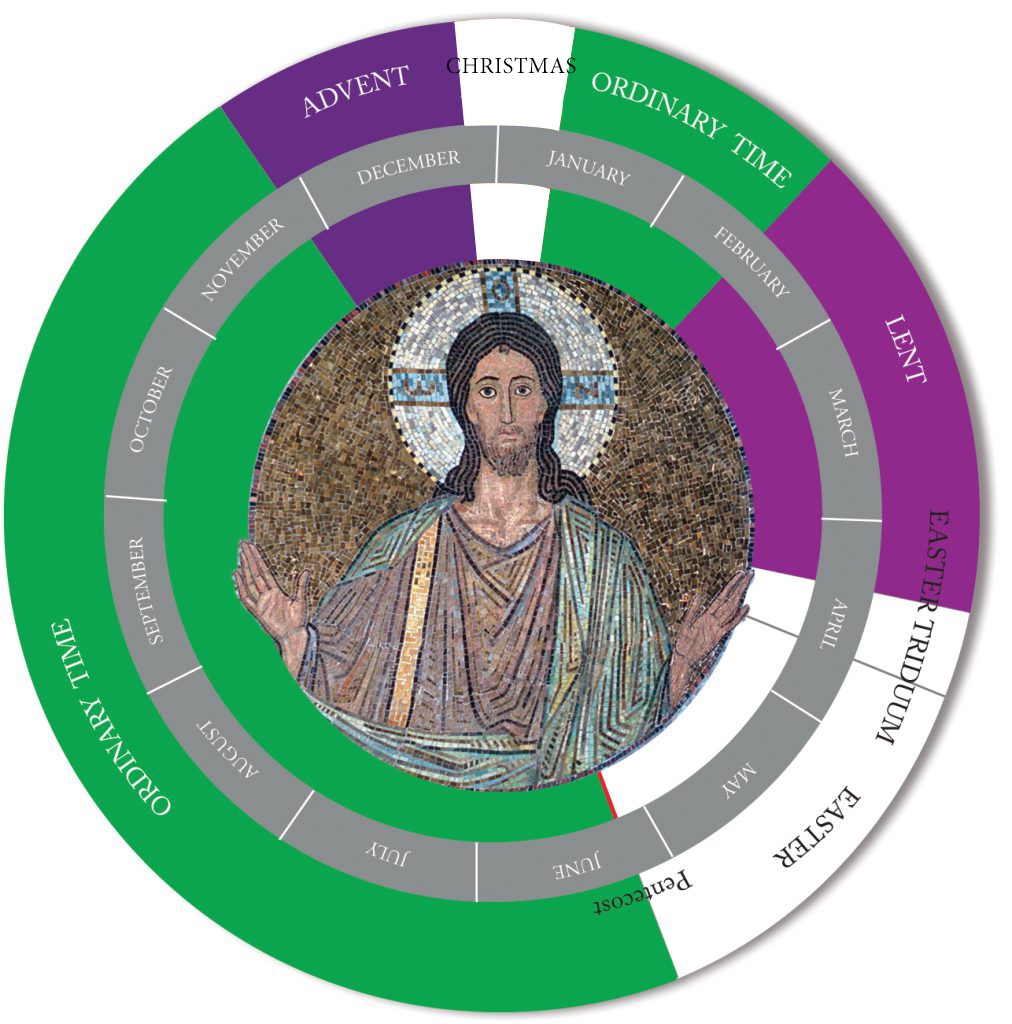There probably aren’t many people who wish you Happy New Year in November! But sometimes the last Sunday of November actually is the beginning of the new year in the Catholic Church. The First Sunday of Advent marks the official start of the liturgical year (the annual date is the Sunday that falls during the week of Nov. 27-Dec. 3).
The liturgical year is a cycle that keeps repeating itself year after year, but, from a spiritual standpoint, it is always new because it continues to draw us more deeply into our relationship with Christ. The Catechism of the Catholic Church tells us that each liturgical year becomes for us a “year of the Lord’s favor” (No. 1168).
Unlike the secular year, which marks the passage of time, the liturgical year celebrates the sacred mysteries of the birth, life, death and resurrection of Jesus. It includes the feast of the Ascension, when Jesus returned to heaven with the promise that he would come again, and Pentecost, when the Holy Spirit descended upon the apostles.
The Liturgical Seasons
- ADVENT IS THE FIRST SEASON. It is a time of waiting for the birth of the Messiah. There are four Sundays in Advent. You’ll notice at Mass that the colors used for vestments and altar cloths during Advent are violet or dark violet, with pink on the Third Sunday of Advent to symbolize hope. The readings and the music during Advent reflect this spirit of anticipation and longing for the coming of the Lord.
- CHRISTMAS EVE MARKS THE BEGINNING OF THE CHRISTMAS SEASON IN THE CHURCH, which lasts until the feast of the Baptism of the Lord in January. White or gold are the colors used for vestments and altar cloths. The readings, the music and the decorations in the church project joy and a sense of celebration. Christmas, of course, is always December 25.
- ORDINARY TIME FOLLOWS THE CHRISTMAS SEASON. It begins on the Monday after the feast of the Baptism of the Lord and ends when Lent begins. A second period of Ordinary Time follows Pentecost and continues until the beginning of Advent. The color green, a symbol of hope, is used for vestments and altar cloths during Ordinary Time. Throughout Ordinary Time, the story of Jesus’ life and ministry continues to unfold.
- LENT IS AN IMPORTANT SEASON IN THE LITURGICAL YEAR. It is a 40-day period of fasting, abstinence and repentance that begins on Ash Wednesday. No meat is eaten on Fridays during Lent. The season of Lent culminates with the liturgies of Holy Week, which recall the passion and death of Jesus. Purple is used for vestments and altar cloths during Lent. The Gloria is omitted during Lent and the word “alleluia” is not said or sung. To find Ash Wednesday, you start with the date of Easter Sunday, go back six weeks (that gives you the first Sunday of Lent), and then back up four more days: Ash Wednesday is the Wednesday before the first Sunday of Lent.
- EASTER IS THE MOST IMPORTANT CELEBRATION IN THE LITURGICAL YEAR. The Easter season begins with the celebration of the resurrection of Jesus and continues for the next 50 days, until the coming of the Holy Spirit on Pentecost. The color of the Easter season is white, representing Christ’s victory over death. The music is filled with joyful alleluias. Easter is celebrated on the first Sunday after (never on) the first full moon after the vernal equinox (the first day of spring). Watch a video below!



